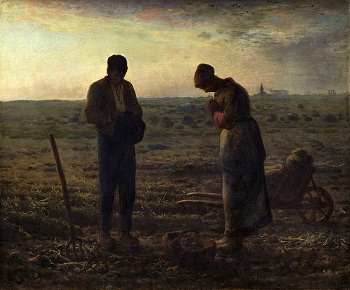Born:
August 20, 1807; Bordeaux, France
Died:
November 18, 1876; Menton, France
Nationality:
French
Art Movement:
Barbizon school, Realism, Orientalism
Genre:
landscape
Field:
painting
Influenced by:
Theodore Rousseau
Friends/Co-workers: Jean-Francois
Millet
Narcisse
Virgilio Díaz was a French painter of the Barbizon school.
 |
| Narcisse Virgilio Díaz |
Born
in Bordeaux, France to Spanish parents, Diaz spent an unfortunate childhood,
such as he became an orphan at the age of ten, and then while living with her
mother's friends in Meudon wood, near Sèvres, he was bitten by a reptile and
eventually lost his leg.
At fifteen, he entered the studios at Sèvres, first decorating porcelain, then turning to painting. Fascinated by Turkish and Oriental paintings, he painted Eastern figures dressed in rich colors.
 |
| Oriental Woman, Narcisse Virgilio Díaz |
He also spent a lot of time in
Barbizon, near the Fontainebleau Forest, where some of his most famous
paintings were born.
 |
| Forest of Fontainebleau |
Around
1831, Diaz met Théodore Rousseau, who was younger than himself, but was highly
respected. He found out that Rousseau was painting wonderful forest pictures at
Fontainebleau, so he determined to paint in the same way if possible. However,
Rousseau, who was not in good health at the time and was embittered against the
world, was initially difficult to approach, but was moved by Diaz, who showed
enthusiasm for understanding his technique, and finally taught Diaz all he
knew.
 |
| The Charcoal Burner's Hut, Théodore Rousseau (c.1850) |
Diaz exhibited many paintings at the Paris Salon, and in 1851, was awarded Chevalier (Knight) of the Légion d’honneur.
 |
| Chevalier légion d'honneur |
Diaz's most famous works are paintings of forests and storms, and his works are in the collection of world-renowned art galleries such as the Louvre and the Wallace Collection.
 |
| Louvre Museum |
 |
| Wallace Collection |
The Metropolitan
Museum of Art also houses about two dozen of his works, including drawings and
studies, as well as another version of "The Forest of Fontainebleau".
 |
| Metropolitan Museum of Art |
Diaz did not have well-known pupils, but many famous painters imitated and admired him.
For example, François Visconti, imitated his work to a certain degree, and Léon Richet remarkably followed the way he painted trees.
 |
| Landscape With Figure Near Pond and Cottages, Leon Richet |
In addition, Jean-François Millet painted pictures in imitation of Diaz's then-popular subjects for a period of time, and Renoir once said, "My hero was Diaz."
 |
| The Angelus, Jean-François Millet (1857–1859) |
 |
| Dance at Le Moulin de la Galette, Pierre-Auguste Renoir (1876) |
In 1876, Diaz, who caught a cold while visiting his son's grave,
went to Menton to recover his health, but eventually died on November 18 of
that year.
Famous Works (Narcisse-Virgilio
Diaz)
Thank
you.

































